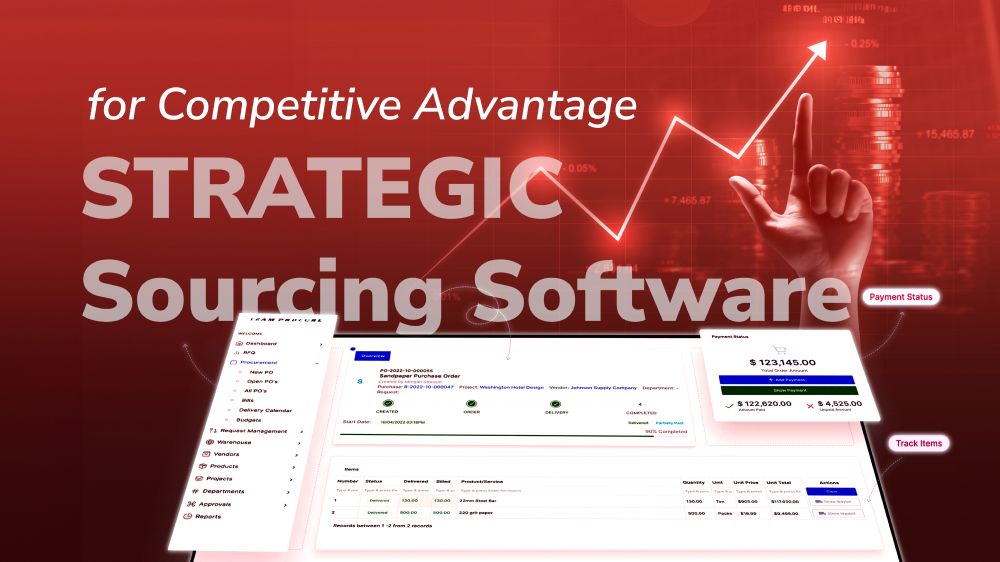Software Development Outsourcing Tips: How to Drive a Successful Outsourcing Endeavor

Content Map
More chaptersThis is an accumulation of less popular yet useful tips about software development outsourcing. Refer to these suggestions if you’re about to make a move.
It is no secret that outsourcing is viewed as the best solution for any company or organization that finds itself in a challenging situation caused by a lack of resources, knowledge, or experience. Especially when the global economic downturn is near, outsourcing proves its vital role for companies in acquiring international customers and building a global presence. Generally speaking, outsourcing or business process outsourcing (BPO) involves delegating business operations to third parties– often known as outsourcing partners – that have sufficient resources and experience to handle complex tasks. This way, businesses can leverage resources from third parties for increasing productivity while saving money. Outsourcing needs are variable, and they are based on the industry that the service users are operating in, ranging from IT-related work (such as cybersecurity, IT support, DevOps, web design, etc.) to non-IT services (e.g., customer service, finance, accounting, etc.). With all the significant benefits, businesses of all sizes and shapes have good reasons to outsource their projects.
In the IT sector, outsourcing has come to prominence as it grants small businesses and startup companies a competitive advantage in terms of talent and technology. Notably, software development outsourcing is one of the most outsourced business functions among others. In this outsourcing model, a client collaborates with an outsourced team to develop software applications on demand.
In this guide, Orient Software will introduce some tips for successful outsourcing partners. Not any common tips you used to know, but the practical and less-known ones that work well. The entire venture of outsourcing software development comprises three stages, so we will categorize the tips accordingly:

Project Planning & Preparation
The best practices you need to go through before looking for an outsourced service provider to rely on stay unchanged, starting with listing the goals and requirements, identifying the right technology stack, setting a budget and timeline, etc. But knowing some tips can ease the process.
Weigh the Pros and Cons of Software Outsourcing
There will not be any strategy with no risks or challenges. Software development outsourcing, in general, does bring numerous benefits, but it also comes with some possible pitfalls. The benefits you strive to reap and the obstacles you are supposed to face heavily depend on your outsourcing goals, so first, ensure you do well in project planning.
In reality, businesses often have a variety of options when it comes to entrusting a service provider to take on your project, including outsourcing relationships (such as project-based, dedicated teams, staff augmentation, etc.) and models (such as onshore, nearshore, or offshore), and service types (such as web application development, mobile application development, etc.).
With a variety of options in what, when, and how you like to outsource your IT needs, you certainly require a solid foundation to proceed with further considerations of whether outsourcing is the right decision for your case or not. If yes, then which portions of the project should be contracted out?
When everything is laid out clearly in your plan, you have accurate insights to predict the advantages and also prepare for the difficulties once the outsourced projects hit the ground running. Do not underestimate this tip unless you have no fear of unexpected incidents. It is better prepared than wishing good luck. Such outsourcing challenges as communication issues, language barriers, or cultural differences can be minimized if you have already taken steps to detect and address them beforehand.
Assess Your In-house Resources
This tip is all about making sure that your in-house resources are maximized. Think about the know-how and experience of your in-house team, particularly when deciding which parts of the project should be outsourced and which ones shouldn’t. How much workload can they take on? What tasks require more urgent attention from them? What areas need to be upgraded with external support? Evaluating your assets properly will help you better understand what outsourcing solutions fit best for your case.
Always Start Small
As you are ready to outsource, it is a wise decision to start small. Do not rush into huge initiatives at the very beginning, especially a new project. Choose something that does not require a large investment and keep the risks low. This enables you to see how the outsourcing process works in practice and gain insights into potential challenges or issues. With this method, you can fine-tune your approach as you move along from one project to another so that future collaborations with service providers become smoother, more efficient, and more successful. Therefore, it is suggested that businesses should start small when they are new to IT outsourcing before embarking on bigger projects.
Spend Time Learning about an Outsourcing Contract
Prior to going for a software outsourcing relationship, legal matters should definitely be taken into account. So, make certain you can read and comprehend every single detail of an outsourcing contract.
An outsourcing contract represents the contractual agreement of both parties on the working conditions, legal obligations and liabilities, copyrights, termination rights & methods, etc. It decides who owns the project’s intellectual property, who is accountable for what is in the development process, and how disputes will be handled. Moreover, it will specify how much the service provider will be involved in the implementation of your software project and how reliable they will be. This will be stipulated in the service level agreement, and it must be consented to by both sides.
Being cognizant of the details of your contract, you are armed and prepared to go forth with your project outsourcing confidently. And it will be advantageous when it comes to negotiation sessions. In case you have difficulties understanding the terms and conditions of an outsourcing contract, consult with an expert for legal advice.

Selecting an Outsourcing Service Provider
Finding and choosing the right partner is the key to success in outsourcing software development, and it is not easy. Currently, there are many ideal destinations for outsourcing, and each has a large volume of service companies with different levels of skills, quality, and prices. Based on your project goals, you can find and shortlist the potential service providers that are capable of delivering outcomes closest to your expectations. The vetting process will take time and effort, but make certain that you do not skip any part of it. If you find it vague and confusing, refer to this guide to finding the right outsourcing partner.
Conduct Due Diligence But Do Not Forget Comparative Analysis
When it comes to researching potential service providers, due diligence is significantly important. It is necessary to thoroughly investigate the service provider’s experience, technical expertise, and background.
Do not just go by their words, but actually verify them. Look into their portfolio and make sure that they have already carried out projects similar to yours. Inquire them about areas like pricing, project size, experience with similar projects, timeframe for delivery, etc. Also, ask for references from previous customers or clients who have used the same services before so that you can grasp more insights into how well they performed.
Apart from these basic due diligence steps, opting for comparative analysis will be a plus point when it comes to selecting your ideal IT outsourcing partner. In this process, you will compare services and vendors against each other by their rates, pricing models, offerings, turnaround time, technical capabilities, project management practices, and more. As such, you can decide which one offers the best match with regard to your project requirements as well as budget constraints.
Stay Alert on the Quality of Resources
Dealing with the short- or long-term shortage of IT manpower makes businesses rush to beef up their teams, sometimes regardless of the employee quality. Hiring an outsourced team of novice personnel sooner or later results in poor performance, which will affect the overall progress of your project, slow down the development cycle, or, even worse, lead to rework.
Once again, the critical role of the service providers is emphasized as they are responsible for talent acquisition and team assembly from A to Z. So, you’d better make the right move with your partner first. But it does not mean you lean on the vendors completely to assure the quality of your outsourced staff. You entrust your partner with the recruitment process, but you should be kept posted on the project resources and their updates. Make sure to validate their capabilities and gauge their potential by performing background checks on them, such as referencing past employers or colleagues if applicable. It is also important to assess the team’s working environment and make sure that they are capable of delivering high-quality results in a timely manner.
Do not hesitate to reject unqualified candidates and keep searching until you find the most suitable team for your project. Remember, an efficient and well-performing team is the key to successful IT outsourcing.
Recruit Developers from Other Alternative Outsourcing Destinations Rather Than Prevalent Ones
When it comes to outsourcing software development, specific destinations have already gained great traction and are becoming more and more saturated. India and China are two familiar names on this list. Though cost-effective, these countries tend to have intense competition between vendors, and hence, project quality may be compromised.
That’s why it’s wise to look for alternative sources and compare them with the more prevalent ones. For example, you can consider hiring developers from other countries such as Vietnam, Malaysia, the Philippines, etc. In these regions, you will find highly qualified tech talents at a very reasonable rate and will gain an advantage of less competition between vendors while searching for the appropriate service provider without compromising on the potential quality outcomes. Therefore, you should evaluate the other outsourcing locations carefully to choose the one that fits your needs yet does not cost too much.
Do Not Forsake What You Come for
With all the cost-saving benefits outsourcing software development offers, it makes sense that most companies prioritize cost-effectiveness over other factors. However, the final goal is not only to save money but to achieve the desired results. Thus, you should never forgo quality. Otherwise, it is such a waste of resources and effort. There are particular things you should and should not do during the vendor selection process. Therefore, you ought not to sacrifice quality for cost savings. Instead, focus on your initial outsourcing goals and try to find an outsourcing service provider who can balance cost-effective solutions and high-quality services.

Managing Outsourcing Partnerships
IT vendor management is not any less important than the two previous ones, as it plays a crucial role in your outsourcing endeavor. It dictates how well your relationship with the service provider will work and ultimately affects the outcome of the project. Therefore, you should save some useful tips to manage and build a good collaboration with your outsourcing company.
Enforce Transparency & Clear Communication
After settling down with the right partner, the next target to seize is to ensure efficient IT vendor management. Make sure the communication is consistent and flawless. Establish frequent meetings with both sides to assign tasks, assess the progress and performance of your partner’s team, and make necessary adjustments accordingly. Also, have an open discussion about any issues or obstacles that arise from time to time. Doing this will help you keep everyone on the same page as well as maintain a good relationship with your outsourcing partner, and it also allows you to track the process in a much more efficient way. As long as you keep the work transparent and consistent communication between your teams, you will be able to successfully handle the partnership.
Get to Know Your Partner’s Teams & Pay Them a Visit
In addition to technical and quality assurance capabilities, mutual understanding and trust are essential to prevent the outsourced team from falling short of your expectations. This is why businesses should get to know the partner’s team.
This is how you gain the opportunity to put yourself in their shoes to assess and evaluate their working environment, understand their culture better, and think of ways to boost their morale and make them function as a team as if they were your own.
Furthermore, if possible, you should also pay a surprise visit to your outsourcing partner so that you can nurture a good relationship with the team in person while validating their background information and performance. This way, you gain more insights into how they work, ensure everyone is on the same page, and make sure they stay focused and motivated. Happy staff will lead to better results; keep that in mind.
Indeed, software development outsourcing is undoubtedly one of the most powerful strategies for companies seeking growth. However, the outsourcing process is not a one-off. On the contrary, businesses will have to go through different stages and invest time, resources, and also an effort to build a successful outsourcing partnership and extend it over time. Hopefully, this guide has empowered your endeavor in outsourcing software development with handy tips. It is your time to take action. Good luck.







